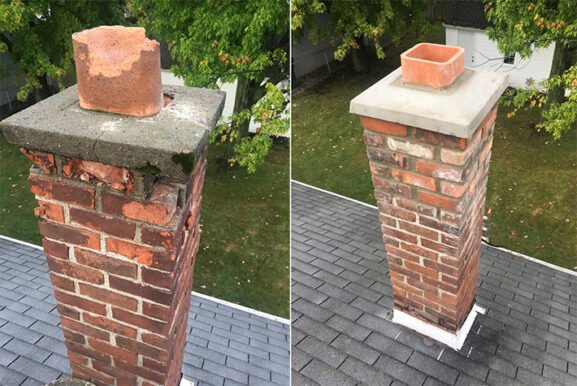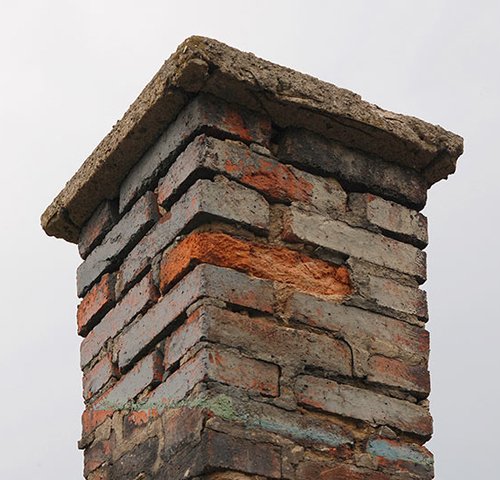Understanding Chimney Leak Repair Cost and What Homeowners Should Know
Key Takeaways
- Chimney leak repair costs can range widely depending on the extent of damage and the materials involved
- Common causes of chimney leaks include damaged flashing, cracked crowns, and deteriorating mortar joints
- Early detection can significantly reduce overall repair expenses and prevent structural damage
- Hiring experienced professionals ensures repairs are done safely and to code, preserving your home’s value
Why Chimney Leaks Are a Serious Concern
Chimney leaks may seem minor at first glance, but left unaddressed, they can lead to significant structural damage. Water intrusion can affect not just the chimney structure but also surrounding areas like ceilings, attics, and walls. The cost of chimney leak repair often reflects the complexity of the problem and the urgency of the response.
Whether you’re seeing signs like water stains near your fireplace or hearing dripping during heavy rain, taking action early can keep repair bills in check. Understanding what drives these costs is key to making informed decisions when it’s time to call a professional.
What Influences Chimney Leak Repair Costs
Chimney leak repair costs typically fall between $150 and $1,200, depending on several key factors. Here’s a closer look at what can affect the final price:
Type and Extent of Damage
If your chimney leak is due to a small issue like cracked caulking or loose flashing, repairs might be relatively inexpensive. However, more serious damage like a deteriorated chimney crown or spalling bricks can lead to higher costs, especially if scaffolding or partial rebuilding is needed.
Access and Chimney Height
Chimneys on taller buildings or difficult-to-reach roofs require more labor and safety measures. This increases costs, especially in areas where extra equipment is needed to safely complete repairs.
Material and Repair Type
Some repairs are quick and cost-effective, such as re-sealing flashing or patching up mortar joints. Others, like replacing a damaged chimney cap or repairing internal flue liners, involve specialized materials and tools that raise the overall cost.
Regional Labor Rates
Chimney repair costs also vary by location. For example, in regions with harsh winters like the Northeast, professionals often deal with freeze-thaw damage that’s more complex to fix. Additionally, higher labor rates in urban areas can increase your bill. According to HomeAdvisor, homeowners nationwide typically pay between $160 and $750 for chimney repairs, with leak-related jobs falling into this range.
Common Leak Points and What Repairs Cost
Understanding where leaks most often occur can help you estimate what repairs might cost in your situation. Here’s a breakdown of the most common problem areas:
Flashing Repairs
Chimney flashing is the metal seal where the chimney meets the roof. If it rusts or separates from the chimney, water can get in. Repairing or resealing flashing costs between $200 and $500, depending on roof accessibility and the materials used.
Chimney Crown Repairs
The crown is the concrete slab at the top of the chimney that protects against water entry. Cracks in the crown are a major source of leaks and often require resurfacing or replacement. Expect to pay $300 to $1,000, depending on the size and severity of the damage.
Masonry and Mortar Repairs
When bricks or mortar joints begin to crumble or crack, water can easily seep in. Tuckpointing or replacing damaged bricks usually costs $350 to $800. Delaying this kind of repair can lead to much more expensive structural restoration down the road.
Cap and Chase Cover Replacements
Metal chase covers or chimney caps prevent rain and snow from entering the flue. A missing or damaged cap can lead to direct water exposure. Replacing a chimney cap generally ranges from $150 to $350, while full chase cover replacements can go up to $700.
When to Schedule a Professional Inspection
One of the best ways to keep chimney leak repair costs down is by catching problems early through routine inspections. Chimney professionals recommend annual inspections, especially if your home is older or you’ve recently experienced extreme weather.
During an inspection, a technician will check critical points like the crown, flashing, brickwork, and cap. Many leaks are invisible to homeowners until the damage becomes costly. A routine checkup might cost around $100 to $300, but it could save you thousands in repairs.
DIY Fixes vs Professional Repair
While it might be tempting to seal a visible crack or apply roofing cement to flashing, DIY repairs often fail to address underlying issues. Professionals not only have the right materials but also the experience to diagnose hidden damage.
Additionally, improper repair attempts can void insurance or home warranties. In most cases, hiring a certified chimney technician ensures the work is safe, effective, and long-lasting.
Long-Term Impact of Ignoring a Chimney Leak
Ignoring a chimney leak doesn’t just risk water damage to your fireplace. Moisture can affect insulation, rot wooden framing, and create ideal conditions for mold growth. Over time, minor repairs that could have cost a few hundred dollars may turn into major renovations costing thousands.
A leaking chimney may also reduce your home’s energy efficiency and resale value. A visibly damaged chimney can signal broader neglect to potential buyers, making it harder to sell your property without significant concessions.
Making the Right Call for Your Home
Every home and chimney is different, which is why no single repair estimate fits all cases. What’s important is recognizing the warning signs early and investing in the right repairs before they escalate. Working with an experienced local professional ensures the work is done safely and aligned with local building codes.
Whether you’re seeing signs of wear or simply want peace of mind before the rainy season hits, taking a proactive approach is the smartest move. Understanding chimney leak repair costs puts you in control—and helps protect one of your home’s most important structures.

